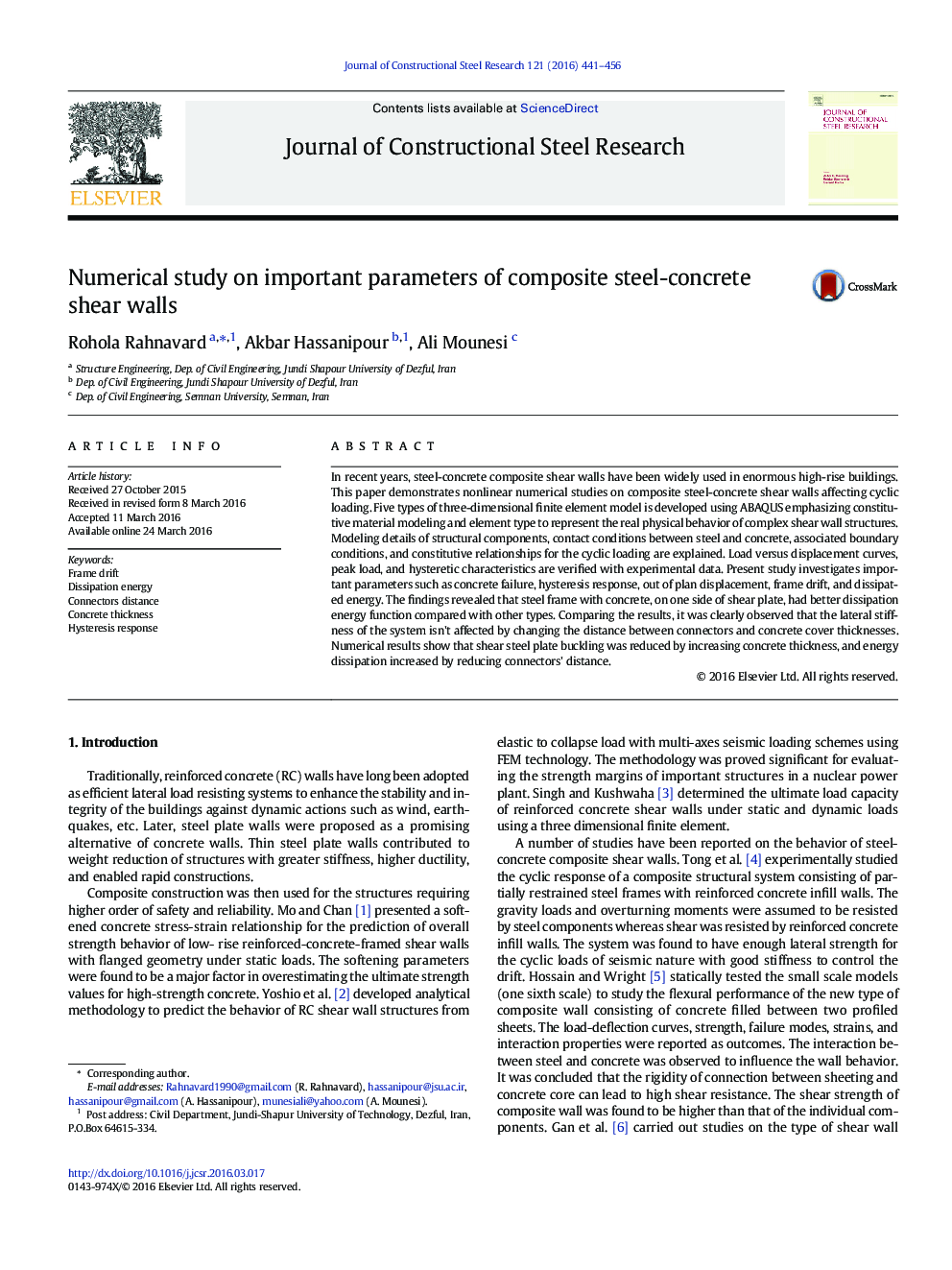| کد مقاله | کد نشریه | سال انتشار | مقاله انگلیسی | نسخه تمام متن |
|---|---|---|---|---|
| 284246 | 509133 | 2016 | 16 صفحه PDF | دانلود رایگان |
• 46 Composite Steel-Concrete shear wall using ABAQUS computer program were created
• The models with each other in view point of shear wall types, connectors distance and concrete cover thickness were compared
• Out of plane displacement reduce by increasing concrete cover thickness and reducing connectors distance
• It observed change in the connectors distance and the concrete thickness doesn’t have much impact on the steel frame drift
• Dissipated energy increased by reducing connectors distance.
In recent years, steel-concrete composite shear walls have been widely used in enormous high-rise buildings. This paper demonstrates nonlinear numerical studies on composite steel-concrete shear walls affecting cyclic loading. Five types of three-dimensional finite element model is developed using ABAQUS emphasizing constitutive material modeling and element type to represent the real physical behavior of complex shear wall structures. Modeling details of structural components, contact conditions between steel and concrete, associated boundary conditions, and constitutive relationships for the cyclic loading are explained. Load versus displacement curves, peak load, and hysteretic characteristics are verified with experimental data. Present study investigates important parameters such as concrete failure, hysteresis response, out of plan displacement, frame drift, and dissipated energy. The findings revealed that steel frame with concrete, on one side of shear plate, had better dissipation energy function compared with other types. Comparing the results, it was clearly observed that the lateral stiffness of the system isn't affected by changing the distance between connectors and concrete cover thicknesses. Numerical results show that shear steel plate buckling was reduced by increasing concrete thickness, and energy dissipation increased by reducing connectors' distance.
Journal: Journal of Constructional Steel Research - Volume 121, June 2016, Pages 441–456
